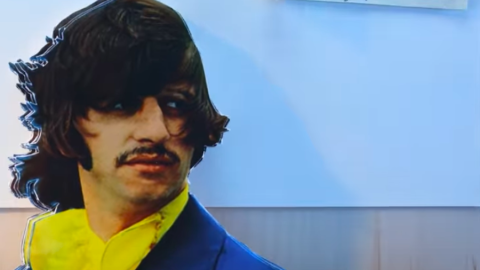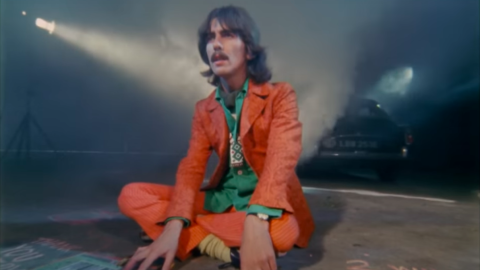Music video
Ticket To Ride
Director – Joe McGrath. Producer – Subafilms Ltd.
Filmed – 23 November 1965.
Location – Twickenham Film Studios, Middlesex.
On the day that ‘Eight Days A Week’ came out in the US, The Beatles were in Abbey Road Studio Two for an afternoon session to record their next single. ‘Ticket To Ride’ was one of three songs they worked on that day and all were to be included in their second feature film, directed
by Richard Lester. At this point the film was untitled, but came, of course, to be called Help! In the film, ‘Ticket To Ride’ is the soundtrack to shots of The Beatles on the ski slopes at Obertauern in Austria, filmed just a month after they recorded the song. This sequence clearly inspired the style of music videos that became so prevalent in the 1980s following the rise of MTV.
When ‘Ticket To Ride’ came out on Capitol in the US, the accompanying press release declared that the song was ‘From the United Artists release Eight Arms To Hold You’. For a long time this was the working title for Help!
The song marks a sea-change in The Beatles’ singles: it was their first to run for over three minutes as well as being more complex both musically and in its lyrical inspiration than its predecessors. Ringo’s drum patterns, in particular, are very different to those heard on a regular
pop single. Unlike many of their previous recordings, where multiple takes were individually numbered, ‘Ticket To Ride’ and some other songs from this period were created from a basic rhythm track and then subjected to numerous overdubs until everyone was satisfied with
the result. The fact that only two takes are listed does not accurately represent the time spent on
perfecting the finished master.
The promo film, shot along with four others at Twickenham Film Studios in November 1965, was
a long day’s work for everyone involved. Filming began in the afternoon and besides director,
Joe McGrath, who would later direct The Magic Christian starring Peter Sellers and Ringo Starr in
1969, there were four cameramen, a sound recordist and a lighting man. They worked straight through into the early hours of Wednesday 24 November, by which time there were ten clips of five different songs that could be used in markets around the world.


Share this website